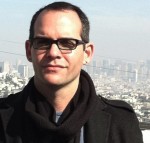In 1994, a young cartoonist named Judd Winick entered the cast of MTV’s “The Real World: San Francisco.” It was there he met Pedro Zamora, a young AIDS educator and fellow cast member who made waves as one of the first openly gay, HIV-positive Cuban men on television. A few months after the season ended, the now-iconic Zamora passed away. In 2000, Winick published the award-winning graphic novel “Pedro and Me,” documenting his relationship with Zamora.
Now, about twenty years after the pair met, “Pedro and Me” has been selected as the UCLA Common Book for the 2013-2014 school year. Daily Bruin’s Aalhad Patankar sat down with Winick to discuss the common book, his memory of Pedro and his other work in the mainstream comic world.
Daily Bruin: What was the most difficult part for you when putting Pedro’s story to paper?
Judd Winick: I’d never done anything like this before. It took two-and-a-half years of pretty steady work, reworking it and reworking it. I was a cartoonist who wanted to do comic strips. I wanted to be like “Doonesbury.” But I never had thought about telling a story in that way … I guess in particular, I never had a story worth telling that way, you know, one that really needed to be in this long-form way. It was hard – it was hard to talk about him in some way that was worthy of his tale. He has a fascinating, important life, and an important story, and here I was sort of fumbling around trying to do it.
DB: What do you want students 20 years after Pedro’s passing to take away from the book?
JW: Well it is pretty mind blowing. It seems so long ago, and it seems 10 minutes ago. … It’s a “we” thing, by the way, it’s not my book. The book belongs to me and Pam (Ling) and Pedro (Zamora) and Cory (Murphy) and other people. It’s our book, and I think what we really wanted to accomplish is exactly right here, with what’s happening through the common book program. … I wanted, 19 years later, for young people to hear Pedro’s story, and be moved the way we were. I just didn’t want to let him go, none of us did. … But the idea that they get to read his story is why we did it, so his story would live on and other young people would know him in this way and experience what it was like to know him a little bit, and understand where he came from and how it was to lose him.
DB: How would you want someone who hasn’t read the book to remember Pedro?
JW: Pedro was incredibly caring, very generous, he really was, he really liked giving people things. He would do that a lot to people he cared about. And he was really funny. … He had this dark sense of humor, which particularly revolved around being HIV positive and having AIDS. … Now, it’s really hard to find it funny now, but that’s who he was. And I would say the last piece was that, for everything he was up against, and how he was rallying to fight against so much, he was still a very, very young 22 years old.
This book is loaded with the small things that Pedro wanted people to remember. One was that everyone should be very frightened of AIDS but not people with AIDS – there’s a difference. … Also, from the time he was diagnosed to literally the day that he died, he also wanted people to know that he was living with AIDS, not dying with it, and there’s a difference there too. … When you meet someone living with HIV/AIDS, you’re not looking at someone with a death sentence, you’re looking at someone who’s living with something. More so now than ever. And he ended every lecture with the same thing: “Be good and remember to love each other.”
DB: You have also worked in the mainstream comic and cartoon world, and worked with “Green Lantern,” “Green Arrow” and on Cartoon Network. How was this different?
JW: “Pedro and Me” was an entirely different thing. It was the first story I told. It did, for me, set a tone for everything else I would ever do … and in there I told many stories that were absolutely influenced by my experience knowing Pedro. … I had Green Arrow’s partner Speedy test HIV positive before she became Green Arrow’s sidekick. We’ve gotten a lot of press for those things, which apparently comic book fans don’t like. I’m known as a guy getting up on the soap box … but that’s okay. I’ll take the rap for that because I really do think that, one, it was always to serve and tell the stories the best we could, to tell great stories, that was the No. 1 goal, and, two, if we could actually get a message out there and get a discussion out there.
